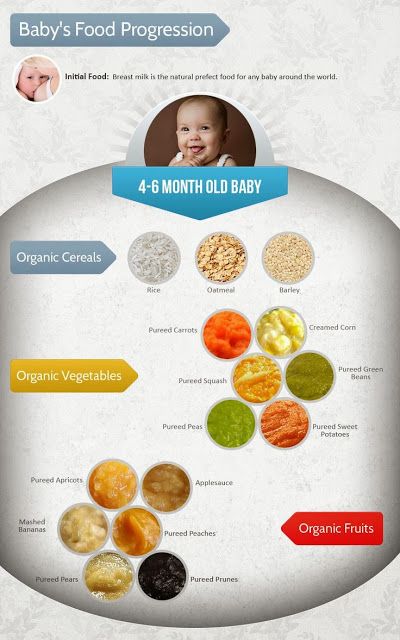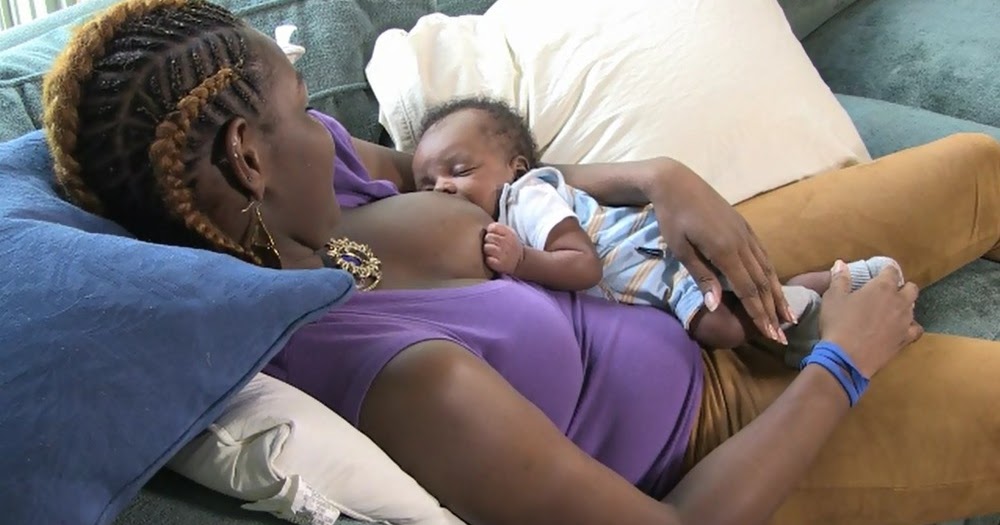My seven month old wont eat baby food
Baby Not Eating Solids? This May Be Why Your Tot Is Refusing
Here's why baby might say no to solid foods
By Jennifer Passmore
When babies are first introduced to solid foods, they tend to already have a preference for what they like. Some babies like vegetables more than they like fruits, while others prefer the sweet taste of fruits over veggies. They usually take to eating solid foods quite quickly and enjoy them very much. Let’s face it, once a baby starts on solid food, all they want to do is eat.
Contents
- If your baby is just starting out on solid foods
- If your baby is a little older and been on solid foods for a bit
- If they stop eating solid foods altogether
- When it’s time to get outside help
When your munchkin seems to enjoy food so much, what happens when they suddenly refuse solids? Or, what do you do if your little one begins eating solids, but then stops eating them entirely? Don’t panic! This is something that happens commonly with little ones and isn’t something to be too concerned about. Let’s go over why your hungry hippo is rejecting solid foods and what you should do about it.
If your baby is just starting out on solid foods
When babies are first introduced to solid foods, don’t be surprised if they automatically try to spit it back out. They may also gag a little bit, which is not to be confused with choking.
For babies, it is all about texture. All adults have those “texture issue” foods that they just won’t eat, no matter what. Babies are the same, and it’s more normal because it’s their first time trying it. When they feel the new texture on their tongue and in the back of their throat, they’re not used to it — which means you could wind up dealing with a spit-out mess.
Typically, parents start introducing solids to their babies between 4 to 6 months old. If your child is at this stage and spitting out their food, they might just have to get used to the new texture. If your baby is not eating solids at all, they could not be ready for this step yet, and that is okay!
If your baby is a little older and been on solid foods for a bit
By 8 months of age, your baby should most definitely be interested in eating solid foods. If they are still refusing, it might come down to a sensory issue.
If they are still refusing, it might come down to a sensory issue.
There could also be the problem of coordination. It actually takes a lot of work for babies to eat solids – from opening their mouth to getting the food off the spoon to swallowing the food without any issues – it’s a whole process.
There is also the possibility that your baby could be bored with their food. You may just move on to finger foods, which might pique their interest better.
But if you notice your baby excessively spitting out the food when you try to feed them, or they are continuing to gag, you could reach out to their pediatrician to see what they recommend.
If they stop eating solid foods altogether
Some babies have no problem with solid foods in the beginning, but then you notice they are refusing them all of a sudden. There are a few reasons why this could be happening.
Baby is sick
If your baby has a cold or a virus that makes it hard for them to breathe through their nose, they may literally turn their nose up at solid foods. If you remove the mucus from their nose, they might try to eat again.
If you remove the mucus from their nose, they might try to eat again.
Baby is teething
Another common reason they refuse solids is they are teething. Teething makes babies feel terrible all around — some even run a fever. They’re certainly not going to want to put solid foods into their mouth because their mouth and gums be swollen, red, and sore.
The whole notion of chewing is painful, and they will keep that mouth clamped shut. Offering liquids like smoothies or frozen items like homemade popsicles will help soothe those gums and get food in that tiny tummy.
When it’s time to get outside help
If your baby is still refusing solid foods at the age of 7 to 8 months, it’s worth giving their pediatrician a call. You might even need to bring your little one in for a quick checkup so the doctor can tell you exactly why your child is not eating or tolerating solid foods. They might end up referring you to a pediatric dietitian with specialized expertise in that field.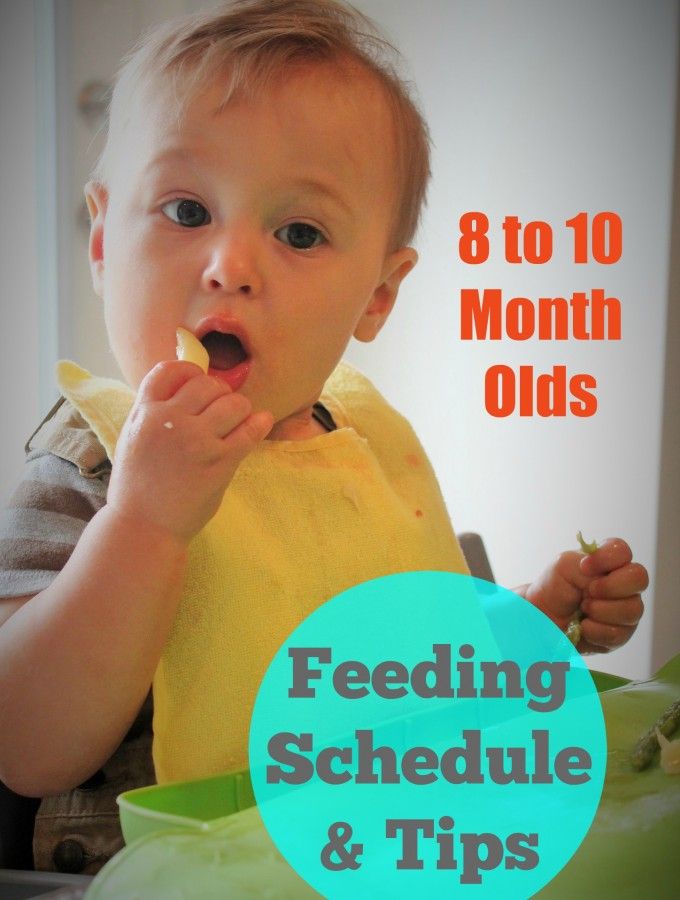
Oftentimes, the reasons babies refuse solid foods are simple and nothing to worry about. Either they’re not ready, they’re not used to the texture, or they’re not feeling great. (Don’t we all prefer soup when we’re under the weather?)
Know that it’s a natural part of your little one’s development. After you’ve checked all the boxes, you will have your baby well on their way to eating — and enjoying — solid foods again!
Editors' Recommendations
- 5 healthy detox soups to feed your family this spring
- 8 healthy Instant Pot recipes that will please every family member
- 9 healthy air fryer recipes that will replace fast food and takeout
- 6 healthy sheet-pan dinners that make cleanup a breeze
- 6 easy muffin recipes for kids to make with or without your help
What to Do When Baby Won't Eat Solids: 7 Simple Steps
When your baby won’t eat solids, it can be stressful. Learn why your baby is refusing food and how to get them to eat solid foods with 7 simple steps!
Learn why your baby is refusing food and how to get them to eat solid foods with 7 simple steps!
The spoon hits the floor.
Your baby makes a nasty face.
They might even shudder or gag.
All from a bite, or an attempt to feed your baby solid foods. It’s totally unexpected when babies respond with such disdain for baby food or table food. As parents, we’re often excited about this new milestone and it’s shocking when your baby won’t eat solids.
In real life though, it’s quite common for babies to gag on solids, seem uninterested, and outright refuse food.
While knowing it’s “normal” for babies to not seem interested in solid foods, even though everyone else’s baby seems to be gulping it down by the jar full, it still leaves the question, “How do you get a baby to eat solids?”
Well, I happen to know a thing or two about that. First, because I’ve personally helped a lot of families get their babies eating solids as a pediatric occupational therapist with over a decade of experience, but also because I’ve been there with my own son…
Going through it as a mom was a whole different ball game.
Of course, I knew that it was normal for babies to refuse baby food when it was first introduced, and I also knew that some babies didn’t much prefer baby food, but my Momma heart was worried. The worrying got worse when I watched my son act like he could’ve cared less about the delicious homemade sweet potatoes that I whipped up, as he turned his face away and threw the spoon across the room.
Meal after meal.
Day after day.
And, week after week.
With each passing day that he refused to eat solids, I got more worried, and more frustrated as I’d watch the food I’d prepared literally go down the drain. There came a point when I knew I needed to do more, to put some of my OT skills to use in my home, and that’s what I’m going to share with you here, because I know how stressful it is when your sweet adorable little baby won’t eat solids.
By the end of this guide, you’ll know :
-
- Why your baby is refusing solids
- Why they used to eat solids, but don’t anymore
- How to get them to eat solids and table foods
- Ways to get them more help (if you need it)
*Keep a look out for the free printable at the end too, if your baby is struggling with table foods!
Affiliate links used below. See our full disclosure.
See our full disclosure.
Why Your Baby Won’t Eat Solids
There are a lot of factors that can actually play a role in any baby’s refusal to eat solid food. We’re going to walk through each of them below, but know that the reason your baby isn’t eating solids could be any one or combination of them. With a little detective work, you’ll figure it out!
Also, age has a little do with it, and will help you hone in on what’s going on.
6 or 7 Month Olds That Refuse Solids:
-
- Baby isn’t ready yet – 6 months of age is the perfect time to introduce baby to solid foods, but sometimes the baby isn’t ready. Actually, this is really common when the baby is closer to 4 and 5 months old if you’re starting a little earlier, but is still totally normal at 6 months of age.
Babies are still learning how to move their tongue and bring toys to their mouth, which helps them get used to having foreign objects in there. Each baby is unique and yours may just need some practice if they are in this age range.
Each baby is unique and yours may just need some practice if they are in this age range.
They also may still be developing good trunk and head control, without it, eating is difficult!
Check out the American Academy of Pediatrics recommendations for introducing food and make sure your baby is ready for solids. You can also find my guide to Introducing Solids with more details on milestones to look for when 6 months old.
-
- A strong tongue thrust reflex – Most babies usually lose this reflex that helps them not choke if something accidentally gets into their mouth around 4-6 months, but it may linger for some.
If you notice that your baby still thrusts their tongue out every time you touch the spoon to their lips, they may need a little more time. It’s really hard for them to eat when they keep shoving their tongue out of their mouth!
-
- Doesn’t like the way food feels – Solid food is something so new and unfamiliar to babies, it can take a while for them to get used to the new texture in their mouth.
 Many babies do in fact get used to the feeling of solids, but some don’t.
Many babies do in fact get used to the feeling of solids, but some don’t.
- Doesn’t like the way food feels – Solid food is something so new and unfamiliar to babies, it can take a while for them to get used to the new texture in their mouth.
Read more about that below under sensory.
8, 9, or 10 Month Olds That Refuse Solids:
-
- Sensory – By 8 months of age, most babies are ready from a developmental standpoint, and at this age, it’s definitely time to get the ball rolling, but some babies (like my son) still refuse. One of the most common reasons why older babies still won’t eat solids is because they don’t like the texture.
This boils down to the way their brains are thinking about (or processing) the sensory input they feel (aka the food in their mouth).
This isn’t a bad thing and doesn’t necessarily mean they have any kind of diagnosis, but it does mean we need to take some extra steps to help them tolerate the texture of food better. You can head to sensory issues with food to learn more.
Babies that are sensitive to different textures usually gag immediately at the sight, touch, or taste of food.
-
- Coordination – Eating actually requires a lot of muscle coordination from opening the mouth, pulling food off of a spoon, closing the mouth, and effectively swallowing.
We take this for granted and don’t even think about it, but for some babies, it just isn’t coming natural.
Babies that are having difficulty with coordination, or oral motor skills (find exercises with that link,) usually gag when trying to swallow or after getting the food into their mouth.
Or, the food may fall out frequently, and babies won’t eat solids because they just don’t know how. When they don’t know how to eat, it isn’t that fun, and there isn’t a lot of interest.
If gagging is something you’re concerned about or is happening often, read more in guide on baby gagging.
-
- Food allergies – Believe it or not, sometimes babies will avoid certain types of foods because they’ve associated an upset tummy with the yogurt or cheese for example.
 It doesn’t happen all the time, but it’s something to consider, especially when it’s very specific allergenic food.
It doesn’t happen all the time, but it’s something to consider, especially when it’s very specific allergenic food.
- Food allergies – Believe it or not, sometimes babies will avoid certain types of foods because they’ve associated an upset tummy with the yogurt or cheese for example.
The most common types of food allergens are dairy, egg, soy, wheat, tree nut, peanut, fish, and shellfish. Severe eczema is another indicator that food allergies might be present.
Sometimes, signs become more obvious when cow’s milk is introduced.
-
- Not into baby food – While this is probably the least likely reason your baby is refusing solids, it is possible.
If you’ve consistently offered baby food or infant cereal with no interest from your baby and you don’t see any of the sensory or coordination signs we talked about above, then you might just might want to move on to table and finger foods.
One way to do that is using a Baby Led Weaning approach, before you do that though read my BLW pros and cons.
*Get a seat in my free workshop and learn 5 big feeding mistakes that might be stopping your child from learning to eat. We’ll send you a free workbook too!
We’ll send you a free workbook too!
Why Baby Won’t Eat Solids Anymore (They Used to?)
-
- Some teething babies won’t eat – While it’s not as common, some babies start off eating baby food and then suddenly stop. A frequent cause of this is teething, and some babies teethe for a very. long. time. If your baby’s teeth are swollen, red, and seem to hurt, then this is likely the cause.
Try putting some teething gel on their gums 15-20 minutes before a meal. If you see an improvement, this is likely the culprit. Here’s a natural teething gel I like, but check with your doctor first.
-
- Going through a phase – Babies may get a little bug or slight cold that we aren’t even aware of or have some negative experience with food that seemed too minor to us as the parent, but makes them leery of eating.
If it’s the latter, some sensory sensitivities can develop if a baby goes for a while without eating any food. If this is the case for your baby, you’ll want to follow the steps below and focus on not pressuring your baby to eat. It’s really important that mealtimes are a positive experience.
If this is the case for your baby, you’ll want to follow the steps below and focus on not pressuring your baby to eat. It’s really important that mealtimes are a positive experience.
-
- They’ve outgrown baby food – If your baby is later in their 7th month or older, they may just be sick of solid baby food and ready for the real deal table and finger foods. That may mean it’s time to change up baby’s diet!
I know that seems scary and makes some parents nervous. Don’t worry though, if you think this is why your baby suddenly won’t eat solids anymore, then head to how to transition to table foods.
How to Get Your Baby to Eat Solids
1. The absolute first thing I do with a baby not eating solids is to put a scoop of baby food or some other pureed food like yogurt onto the tray of their high chair.
I know, the mess. It’s soooo important for babies to get messy though! If you’re skeptical, you’ve got to read: Why Babies Should Get Messy Eating.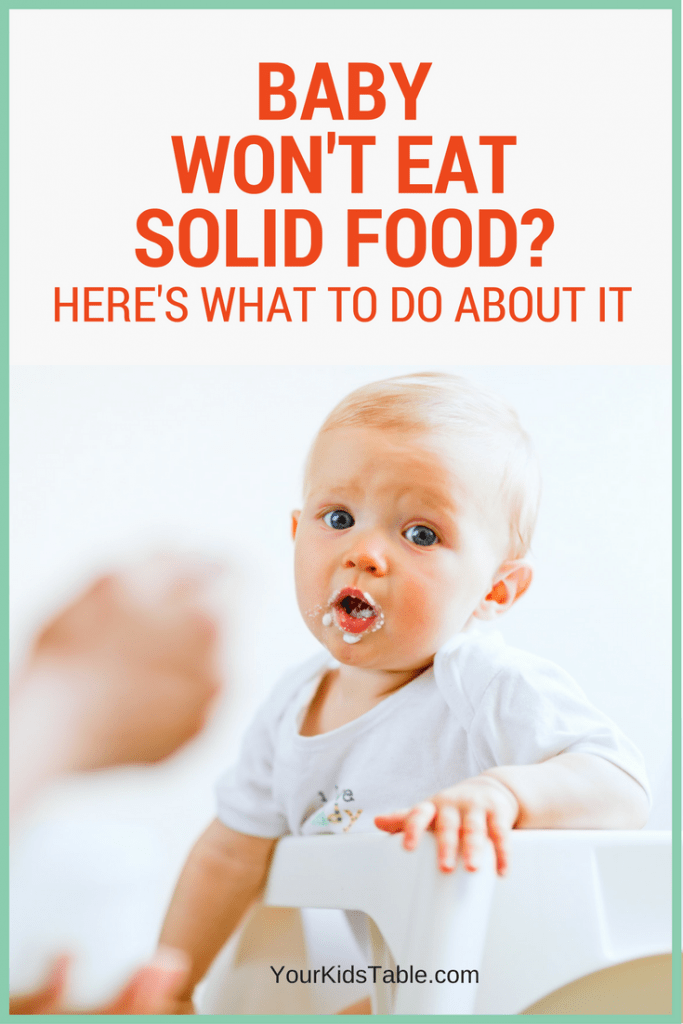 It will totally change your perspective and give you the inspiration to embrace the mess.
It will totally change your perspective and give you the inspiration to embrace the mess.
2. Encourage your baby to touch the food, but don’t force. Be silly and keep it light. Demonstrate.
If they refuse, try and try again. In fact, at every single meal, put a dollop of that food on their tray or even in a bowl that they can play with and touch. If they won’t touch after a few attempts, offer a spoon for them to stick into the food too.
This is one of my favorite beginner spoons that makes it really easy for baby to get some food onto it.
3. Once your child touches the solid food, you’re on your way! Allow them to touch, spread, and put it all over the tray and themselves. This is wonderful for their sensory processing and will make a huge difference in helping them get used to the texture of solids.
If they get upset once they’ve touched the food, or that they are now all messy, be very calm and reassuring.
Have a wet washcloth ready and quickly wipe them down. And, if this is how they respond, it’s a sign that you need to practice playing with these foods a lot! The more they touch and interact with the food, the closer they’ll be to eating it.
And, if this is how they respond, it’s a sign that you need to practice playing with these foods a lot! The more they touch and interact with the food, the closer they’ll be to eating it.
4. When baby has the food on their hand and they’re at least tolerating it, show them how to take their hand to their mouth, so they can taste it. You may need to demonstrate if baby won’t let you guide their hand.
Repeat this several times. After they eat from their hands several times, offer them some solid foods from a spoon.
5. You can also give them a large whole raw carrot or celery stalk at meals. I mean the whole darn thing. The point isn’t for them eat it (and if they can get pieces of it off, take it away), but for them to put it into their mouth.
When they do this, it helps desensitize their gag reflex and they get to practice biting, chewing, and moving their tongue around. It’s amazingly powerful and can make a big impact in a baby accepting solid foods. Make sure you demonstrate and keep offering at every meal.
Make sure you demonstrate and keep offering at every meal.
6. Be consistent and patient. I can’t stress this enough, even though it’s often easier said than done! Have regular meals and follow the above steps 1-3 times a day for every meal. You can find sample schedules for babies ages 6 – 7 months, 8 – 10 months, and 11 -14 months if you’d like a guideline to follow.
7. Focus on meals being positive experiences for the baby, even if they aren’t eating anything. As parents, we can bring a lot of stress with us to meals, which can be hard to hide. But, this is definitely a “fake it til you make it” kind of situation.
Take a deep breath, put on a happy face, and work on the above steps. Going into the meal with no expectations of them eating anything will also help keep your frustration level down.
To learn MORE, grab a seat in my free online workshop.
In it, you’ll learn 5 big feeding mistakes that are stopping your baby or toddler from learning to eat table foods! It’s an eye opener and will help you take steps to give them the best start with eating table foods well (even if it already isn’t going well):
Strategies to Use Outside of Meals for Baby’s Refusing Solids
There are a few really powerful strategies you can use away from the highchair that will directly impact your baby eating solids during meals. Might seem strange, but if you suspect your baby is refusing because of sensory or coordination difficulties, doing these activities can be total game changers:
Might seem strange, but if you suspect your baby is refusing because of sensory or coordination difficulties, doing these activities can be total game changers:
-
- Brush their teeth – If you haven’t started yet, brush their teeth, and when you do, make sure you’re getting all over their gums and the sides, as well as the top of their tongue.
It only takes a few seconds, but it helps to both desensitize their mouth and improve coordination because the tongue gets practice moving in different directions. If your baby doesn’t like it, take it slow, and try often.
The more often you brush, the bigger the effect. Try for one to three times a day, and consider a vibrating toothbrush (yes, even for babies) for more powerful input in their mouth.
-
- Play in sensory bins – That may be a new term to you or you might be wondering what the heck that has to do with eating, but playing in different textures is super powerful and helps the sensory system understand different textures better.

- Play in sensory bins – That may be a new term to you or you might be wondering what the heck that has to do with eating, but playing in different textures is super powerful and helps the sensory system understand different textures better.
This correlates directly to eating. I can’t tell you how many times I’ve seen a kiddo that plays in sensory bins frequently, suddenly start eating more foods (my son included). Head to Sensory Bin Ideas to learn how to set one up.
-
- Chew on toys – So many babies that won’t eat solids never put toys or teethers in their mouth, which is really easy to overlook. If this is your baby, pull out a bunch of different teethers and have them around the house.
Demonstrate. Dip them in food or juice. Play with them in the bath. The more often they get teethers and toys into their mouths, the more it will help improve the coordination their mouth muscles need to eat and desensitize their gag reflex and sensory system.
I really love this teether because it gets in the back of the mouth and this one vibrates (all my friends get it from me at their baby shower).
Help for the Baby Not Eating Food
I’m not just talking about solid baby food or purees. You may have a baby that won’t eat any type of food, like puffs, cut up fruit, or toast. They’re getting older and older. You’re getting worried.
You may have a baby that won’t eat any type of food, like puffs, cut up fruit, or toast. They’re getting older and older. You’re getting worried.
Following the above steps will be incredibly important for your babies too, especially the strategies for outside of a meal. But, you’ll also want to use the steps I outline in getting your baby to eat table foods.
That’s a whole different animal all within itself, and there are some targeting tips that can make all the difference in your baby eating food.
You’ll want to focus on small pieces, and by 9 months of life be attempting table or finger foods.
While I don’t want you to worry, I know it’s tempting to keep waiting it out, and unfortunately, some doctors advise this quite often. This often does not help your baby to learn to eat wide variety of foods.
Babies instinctively learn to chew between roughly 8 and 11 months of age, when they move past that, it can be much harder for them to accept foods. It’s not impossible, and the same steps apply for older children, but it’s much better to be proactive then taking a “wait and see” approach.
It’s not impossible, and the same steps apply for older children, but it’s much better to be proactive then taking a “wait and see” approach.
Puffs, lil cheese curls, and baby mum mum’s are all great for baby’s first foods.
When to Get More Help for a Baby Not Eating Solids
If your baby doesn’t like solid baby food and won’t accept any table foods of finger foods by 9 months old, it’s a good idea to get an evaluation either from the free early intervention program in your state or from a feeding therapist.
You can also read more about typical feeding milestones for babies just to have a reference point. As I said earlier, all babies develop at a different pace and needing a little more help is very common.
Get My Free Printable: Learn to Eat Table Foods Cheat Sheet
There seem to be more questions than answers when you’re under the daily stress of your baby or toddler not eating table foods. Not to mention all of the well-intentioned bad advice that’s often given.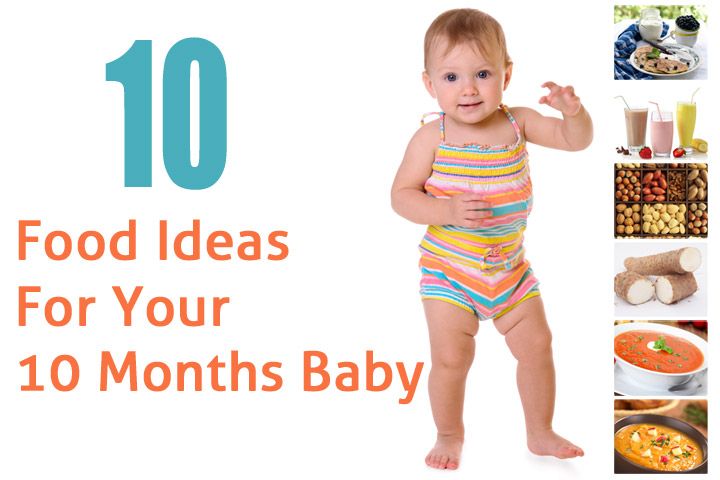 Let’s clear that up.
Let’s clear that up.
I’ve created a free 5 page guide that clearly lists the steps to teach your baby or toddler to eat table or finger foods, plus a FAQ guide for parents to ease their worries when their babies won’t eat!
Get your free Learn to Eat Table Food Cheat Sheet printable here!
More on My Baby Won’t Eat Solids
How to Teach Your Baby to Self-Feed
Mega List of Table Food Ideas
How to Teach Your Baby to Drink from a Straw
The Best Mealtime Utensils and Tools for Babies
Click here to Pin This! (You’ll have as a quick reference)
Alisha Grogan is a licensed occupational therapist and founder of Your Kid’s Table. She has over 17 years experience with expertise in sensory processing and feeding development in babies, toddlers, and children. Alisha also has 3 boys of her own at home. Learn more about her here.
What to do if the child does not eat vegetable purees
— Anastasia Ivanovna, why are vegetable purees useful for babies and why are they introduced into complementary foods?
— Complementary foods are the period of introduction into the children's diet of such products and dishes that will ensure its successful growth and development against the background of milk nutrition. The next goal is to replace one of the feedings with breast milk or formula.
The next goal is to replace one of the feedings with breast milk or formula.
Vegetable complementary foods are introduced so that the baby begins to receive vitamins and microelements not only from mother's milk (mixture), but also from other foods, and the digestive system learns to adapt to the digestion of new products.
— At what age do children get their first vegetable food?
- At each age, you need to focus on the degree of maturity of the digestive system and the nervous system of your child. It is important to know if he has developed chewing movements and gag reflexes in order to understand in what form to give puree. Food interest should also be noticeable - when the baby climbs into the parents' plate, asks for food or attracts a spoon to itself. Food interest appears in a window of 4 to 7 months.
The introduction to solid foods is pediatric complementary foods. On breastfeeding, they begin to feed vegetable purees a little later (after six months), on artificial feeding - a little earlier (closer to five months).
— What vegetable purees are there for children under one year old?
— Feeding vegetables is most often started with a one-component product in liquid form so that the child does not choke. It can be:
- marrow puree;
- broccoli puree;
- cauliflower puree.
Later they can be mixed, but first they introduce one kind of vegetable and look at the reaction of the body. The product is given once a day, and preferably once every three to four days, in order to clearly understand how the baby reacts to this type of complementary foods. A food diary will help.
Solanaceae - potatoes, tomatoes, eggplants, sweet peppers - are recommended to be introduced from 6-8 months and baked. They are difficult to digest, because the baby's digestive system is not yet fully formed. No need to prematurely load the child's body.
— What kind of puree is better for feeding: prepared by mom or ready-made, bought in a store?
- Disputes on this issue do not subside. Someone only cares about jars from stores, someone likes to cook at home. In fact, what mom was tuned in to is more correct. I am for ready-made baby food, because you can be sure of the consistency and quality of the product. We open the puree and understand that we will get the right product with a certain taste. Cotton at opening shows that the jar was stored correctly and the puree is suitable for consumption.
Someone only cares about jars from stores, someone likes to cook at home. In fact, what mom was tuned in to is more correct. I am for ready-made baby food, because you can be sure of the consistency and quality of the product. We open the puree and understand that we will get the right product with a certain taste. Cotton at opening shows that the jar was stored correctly and the puree is suitable for consumption.
— You can often hear from parents that the child does not eat homemade puree or refuses puree from a jar. Why does the child not want to eat vegetable puree?
— Much depends on taste. The development of taste preferences begins long before birth. At the eighth week of pregnancy, taste buds begin to form in the fetus. The amniotic fluid has a taste, and when the mother eats something, the child will accept these foods well in the future. A lot of research has been done on this topic, based on the results of which recommendations are given on the nutrition of pregnant women.
- As for the type of vegetables, for example, potatoes contain a large amount of starch. And if physiologically the child's body is not ready to accept so much starch, then the baby will not eat such puree.
But I want to reassure moms. There is also pedagogical complementary foods, when the goal is not to feed, but to give a try to the product and thereby prepare the child for the perception of this or that complementary food. Here you can check whether a particular vegetable is suitable or not for the baby.
See also
- How to properly introduce vegetable complementary foods when breastfeeding or bottle-feeding.
- The child stopped eating vegetable puree, which he used to love. Is it possible?
— This happens even in adults, when we start consuming foods in one form or another. So, someone may not like boiled carrots, but they will like baked ones. The child will taste vegetables in the same way. And, for example, he will take a rather sweet pumpkin with great pleasure than an unleavened zucchini.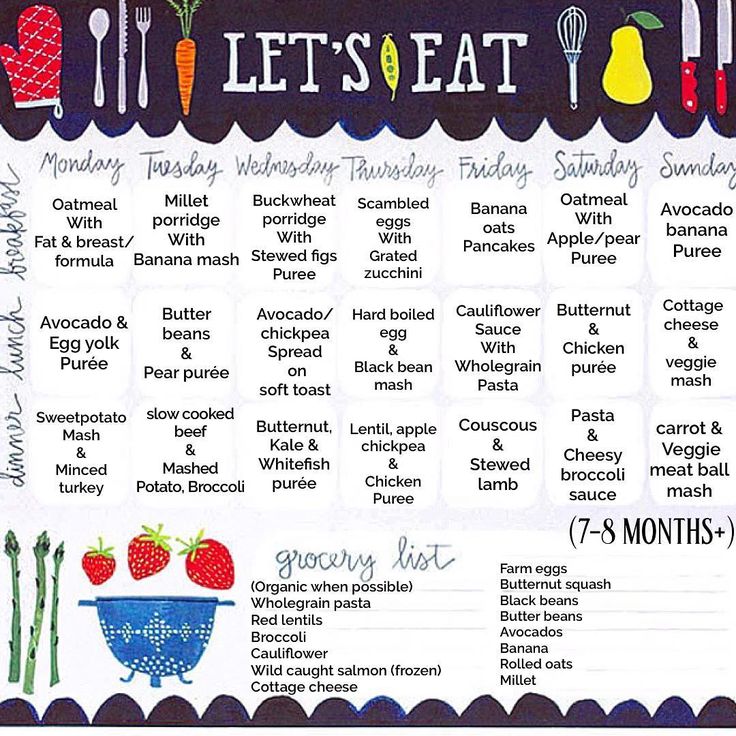 But you need to remember that pumpkin puree is a more allergenic product, and it is better not to give it to the first complementary foods. Also, children perceive some polycomponent purees better. Everything is individual, you need to try and take into account children's wishes.
But you need to remember that pumpkin puree is a more allergenic product, and it is better not to give it to the first complementary foods. Also, children perceive some polycomponent purees better. Everything is individual, you need to try and take into account children's wishes.
— Some mothers add potatoes pre-soaked in water to all mashed vegetables. Does this method work and is it safe for the child?
- Potatoes have a high glycemic index and increase blood sugar levels. Insulin is then produced to deliver glucose to the right cells. And if you add potatoes to all meals, you can bring down the hormonal system. Each product must be dosed.
The same applies to fruit purees. Only sweets are not recommended. Babies who start eating sweets earlier have a higher risk of developing type 2 diabetes and obesity later on. There are many nuances, and in adulthood they will overtake the child.
— What is the difference between vegetable cream soups and purees?
- Soups are introduced later, they differ in density and composition of the components. The child will most likely like the creamy consistency of the soup, and he will not even guess that it contains the same vegetables that mom tried to give in puree. In addition, the addition of milk or cream gives the product a more pleasant taste, including due to natural milk sugar. The child will eat cream soup with great pleasure.
The child will most likely like the creamy consistency of the soup, and he will not even guess that it contains the same vegetables that mom tried to give in puree. In addition, the addition of milk or cream gives the product a more pleasant taste, including due to natural milk sugar. The child will eat cream soup with great pleasure.
As an example, I will give MAMAKO ® vegetable cream soups with goat's milk with pumpkin or spinach. Each product has a delicate texture without foreign inclusions, correct and uniform density. And since this is a goat's milk soup, it is very well suited for normalizing digestion and adapting the baby to an adult diet. The products include 13 vitamins and 7 minerals. Cream soup is diluted according to the scheme of preparation with warm water and does not require cooking, the baby easily absorbs all the nutrients from vegetable cream soup with goat's milk, which contributes to the formation of soft stools.
When starting to introduce vegetable purees, parents should be prepared for the fact that the child may refuse some product or be capricious due to digestive problems when adapting to the food entering the body.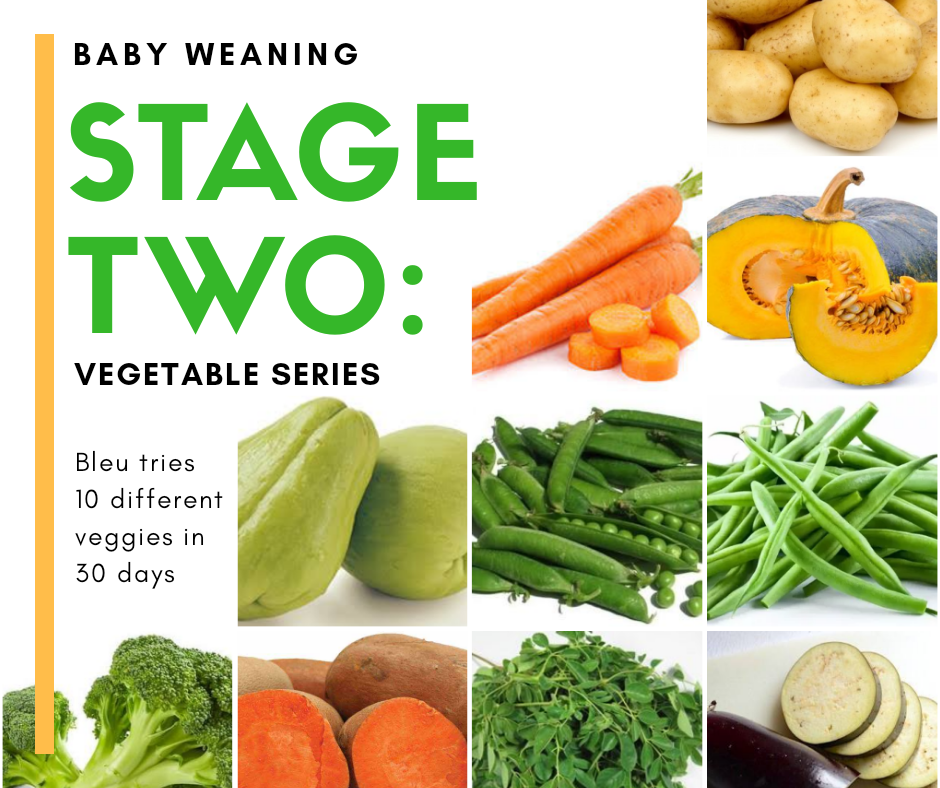 It is also important to pay attention to psychological factors - the formation of eating habits, the introduction of complementary foods in a calm atmosphere, so that food intake evokes pleasant associations in the child. If you refuse products, you can change the form of cooking, mix vegetables. However, do not rush, do not rush to give those products that the child's body is not yet ready to accept - be sure to focus on its age. Be patient and systematically try to diversify your baby's vegetable diet.
It is also important to pay attention to psychological factors - the formation of eating habits, the introduction of complementary foods in a calm atmosphere, so that food intake evokes pleasant associations in the child. If you refuse products, you can change the form of cooking, mix vegetables. However, do not rush, do not rush to give those products that the child's body is not yet ready to accept - be sure to focus on its age. Be patient and systematically try to diversify your baby's vegetable diet.
* Breast milk is the best food for babies. WHO recommends exclusive breastfeeding for the first 6 months of a child's life and continued breastfeeding after complementary foods are introduced until the age of 2 years. Before introducing new products into the baby's diet, you should consult with a specialist. The material is for informational purposes and cannot replace the advice of a healthcare professional. For feeding children from birth.
The child does not eat complementary foods - the reasons for refusal, what to do for mom.

— Polina Alexandrovna, for starters, let's talk about what complementary foods are?
Complementary foods are solid adult foods that a child begins to receive first of all on the background of milk feeding. Before complementary foods, the child eats only breast milk or milk formula adapted to his age.
— Until how many months is exclusive breastfeeding the norm?
- If breastfeeding is understood as feeding only on mother's milk and nothing else, then norm - up to 4-6 months . It is during this period that babies are first introduced to complementary foods.
When should a child start eating complementary foods
- It used to be that formula-fed or mixed-fed babies should receive complementary foods a little earlier than breast-fed babies. And the terms of four to six months were only valid for babies who receive formula. Modern experts are coming to the conclusion that it is also optimal for breastfed children to introduce complementary foods at the age of four to six months.
— Can a baby over 6 months old eat only formula if there is no breast milk, and he refuses complementary foods?
- You should try to introduce the baby to new foods. Perhaps he does not like what is offered, and something else needs to be given. But complementary foods must be present in baby food, and at six months the baby is already required to get acquainted with one or more food groups. Otherwise, a deficiency of certain substances will develop, as the child grows and his needs become greater.
Another factor also plays a role. If the child is not taught to eat on time, it will be much more difficult to do this in the future. 4-6 months is the optimal time to introduce complementary foods both in terms of nutritional value and psychological preparation.
How to introduce your baby to new foods
— We can talk about a differentiated approach to the introduction of complementary foods.
Consistency of Complementary Foods
- Some experts recommend the first to introduce homogeneous purees (maximum crushed products without pieces), others - to give from the plate what the parents eat. However, these are large pieces, and they can only be offered as pedagogical complementary foods and to get acquainted with tastes. For good nutrition, such complementary foods are premature: the baby’s gastrointestinal tract may not be ready for it, and the bulk of the food will pass through the intestines. Therefore, if we talk about nutritional value, then it is better to use homogeneous puree - ground food is quite easily processed by enzymes throughout the gastrointestinal tract.
However, these are large pieces, and they can only be offered as pedagogical complementary foods and to get acquainted with tastes. For good nutrition, such complementary foods are premature: the baby’s gastrointestinal tract may not be ready for it, and the bulk of the food will pass through the intestines. Therefore, if we talk about nutritional value, then it is better to use homogeneous puree - ground food is quite easily processed by enzymes throughout the gastrointestinal tract.
Food groups to start complementary foods
- Depending on the weight, stool and age of the child in which complementary foods are introduced, either cereals or vegetables are selected. There is nothing wrong with sweet and tasty fruits, but they are rarely introduced first, so as not to risk provoking the rejection of less tasty and less sweet cereals and vegetables.
Feeding schedule and combination with breast milk and formula
— It is acceptable to feed an adult enough baby first with breast milk or formula and then offer complementary foods. At the initial stage of dating, it is better to give complementary foods first. A very small child does not know that he has to eat something or that there is a spoon with which to get something tasty. If you give complementary foods after milk or formula, the baby will get enough of them, and he will not have the need to try new things from an unusual spoon.
At the initial stage of dating, it is better to give complementary foods first. A very small child does not know that he has to eat something or that there is a spoon with which to get something tasty. If you give complementary foods after milk or formula, the baby will get enough of them, and he will not have the need to try new things from an unusual spoon.
Baby does not eat complementary foods - what not to do
- Do not give foods that are not age appropriate.
- Do not give foods that can cause allergies.
- Do not give poorly ground food.
- Do not disguise eating as a game or turn on cartoons and at this time try to cram in a few spoonfuls of complementary foods.
An attempt to distract a child with cartoons will lead to the fact that he will sit at the table not to eat, but to play. Food will be of no value to him. The body, although we do not notice, is controlled by the brain. And if at the time of feeding the child is distracted and thinks not about food, his body adapts worse to unconscious eating. The secretion of enzymes necessary to properly control intestinal motility is disrupted. Digestion is not as smooth and less beneficial than when the child understands that he is actually eating and participating in the process of eating.
The secretion of enzymes necessary to properly control intestinal motility is disrupted. Digestion is not as smooth and less beneficial than when the child understands that he is actually eating and participating in the process of eating.
— Does it happen that a child does not eat complementary foods well, if he has not yet grown up to him?
- Here it is important to consider the age at which complementary foods are introduced. At a very young age, an infant may really not be ready for it and will begin to push the contents of the spoon out of the mouth, spitting out everything that is given to it.
Later, the refusal of certain foods is mostly related to the baby's taste preferences or discomfort when swallowing food. If the mother sees that large hard pieces are still difficult for the child, it is better to offer him a homogeneous puree or very soft and fairly small pieces. The child will not notice how he swallows them.
The body's unpreparedness for a particular type of product can be manifested by dyspeptic symptoms and stool disorders (diarrhea, streaks of mucus or blood), the child's anxiety due to increased gas formation in the tummy.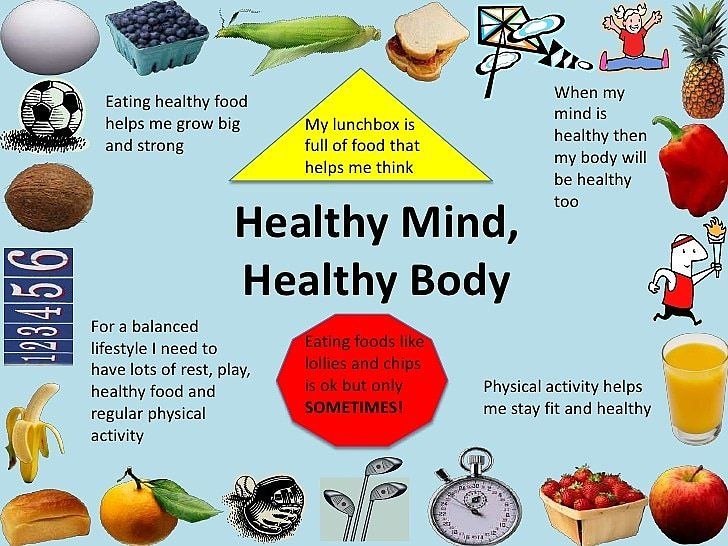
Why the child does not eat complementary foods
— Polina Alexandrovna, why might a child not like complementary foods?
— There are various reasons why a baby does not like complementary foods. Here are the most common:
- Taste preferences. A very common product for the first complementary foods is zucchini, which a mother can cook herself or purchase in the form of ready-made baby puree. Homemade and store-bought mashed potatoes have completely different taste qualities. Therefore, some children like what their mother cooks more, while others enjoy eating a canned product.
- The consistency of the first complementary foods. For example, a child does not eat porridge well. This is possible if the porridge is thick - in consistency it is too different from breast milk or the mixture that the baby used before.
- Sometimes a baby does not eat complementary foods simply because he does not like the environment or is not up to feeding at all.

Read also
- about problems with the introduction of the first complementary foods.
— If a baby does not eat one type of food well, can it be changed?
- You need to make sure that the child does not eat precisely because he does not like a particular type of product, for example, broccoli. Try offering the vegetable several times in different settings or in different preparations. If during the week the product does not “enter” in any way, there is no need to torment the baby. Instead, you can offer him mashed zucchini or cauliflower. When the baby gets used to the new diet and the age norm, you can mix broccoli in different proportions in the puree and watch how he will eat this vegetable. There are no such irreplaceable products that you need to force-feed a child. The main thing is that the baby eats a variety of complementary foods.
— Will special drinkers, spoons, bottles help in feeding the baby?
- It is necessary to distinguish between the reasons why the baby does not eat well. If he does not like the taste of the product, then no spoon or drinking bowl will help. But if the baby is bored while feeding, plates with animals and a bright spoon will come in handy. It happens that a spoon does not fit, it is physically difficult for a child to eat from it - then you need to try others. Dishes should be comfortable, especially when the baby begins to eat on his own.
If he does not like the taste of the product, then no spoon or drinking bowl will help. But if the baby is bored while feeding, plates with animals and a bright spoon will come in handy. It happens that a spoon does not fit, it is physically difficult for a child to eat from it - then you need to try others. Dishes should be comfortable, especially when the baby begins to eat on his own.
Strongly do not recommend that parents give bottled food . Thus, an adult meal is disguised as feeding a small child. The kid does not get used to eating at the table, moreover, the digestion of food does not start quite correctly. When bottle-feeding, the product is practically not processed by saliva enzymes because contact is minimal. For breast milk and formula, this is acceptable, but for solid food, the bottle plays a negative role.
Watch videos on introducing complementary foods and preparing for the transition to the common table.
— What if the child is not interested in "adult" food?
- The best thing that parents can give their child - and this applies not only to food, but to everything that happens to the baby - is personal example . It has long been observed that children learn through imitation. They are more willing to play not with toys, but with remotes and phones, they always repeat the movements and facial expressions of their parents. In the same way, they repeat what their parents do at the table. Therefore it is important to put the child at the table from the age of three months , and not isolate him at the time when you eat.
There are a huge number of highchairs for feeding from 2-3 months. The baby can be placed almost in a supine position without strain on the back. The child at the table will see what you are eating, how the process is going, and will understand that this is normal.





